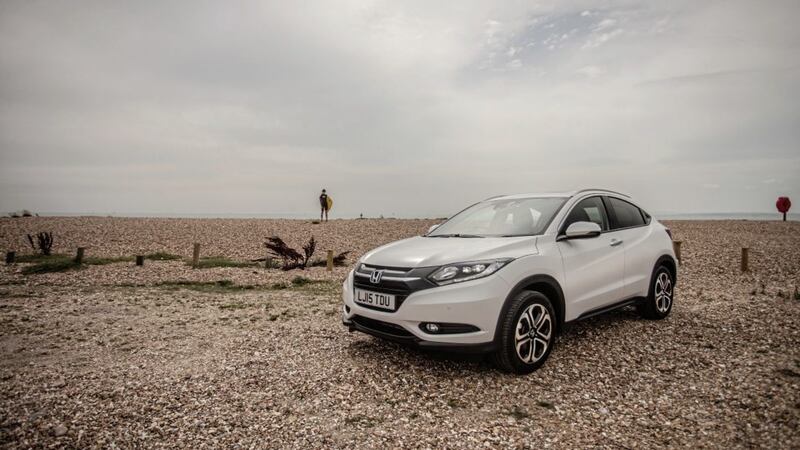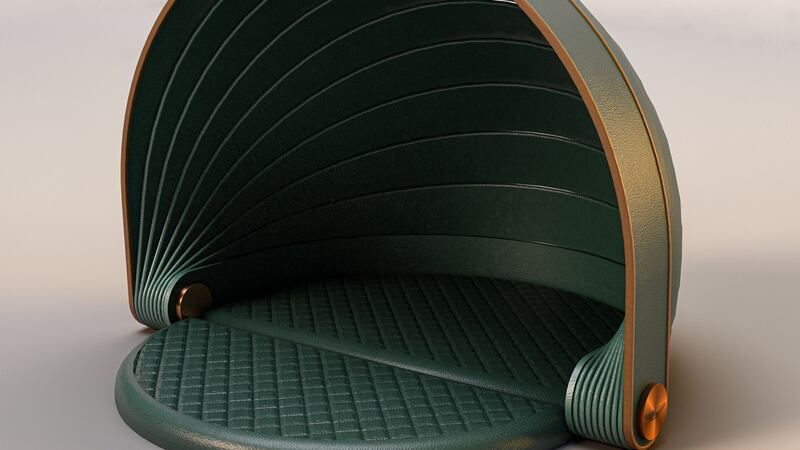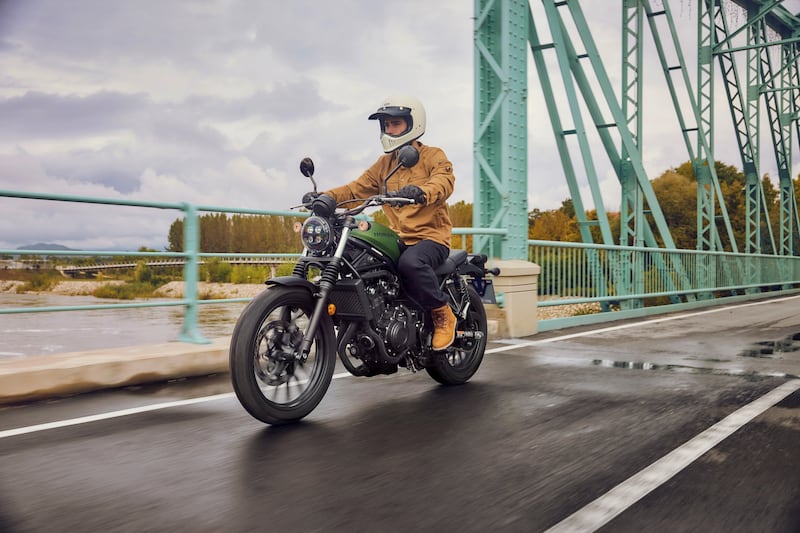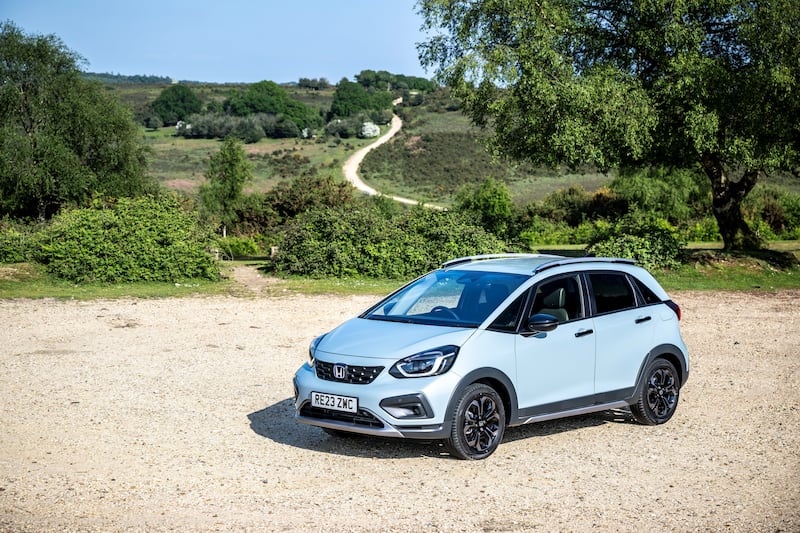HONDA is having another go at selling us a junior crossover, and wants to persuade us to swap the Nissan Juke, Mazda CX-3, Renault Captur and whatever else has been launched this month for its new HR-V, writes William Scholes.
The first HR-V last troubled the sales charts in 2006, when Honda gave up on the idea and set about concentrating on designing ever wackier Civic hatchbacks and pensioning off the Accord.
Having concluded that smallish, high-riding hatchback-meets-SUV cars plainly had no future, Honda has since had to watch on helplessly as more or less every other manufacturer has launched its own smallish, high-riding hatchback-meets-SUV and struggled to keep up with demand.
In hindsight, ditching the HR-V looks even more curious when Honda obviously considered that the larger CR-V did have a future - a decision vindicated by it becoming one of the best-established crossovers out there.
Whatever you call them and whatever size they come in, crossovers or SUVs have caught the buying public's imagination and are exactly what the market now demands.
A quarter of the new cars registered in Europe are now crossovers, and that proportion is set to get even bigger. No wonder Honda wants a slice of the action.
Perhaps to compensate for arriving so long after the Nissan Juke, Renault Captur and Vauxhall Mokka, the HR-V offers vastly more interior space than any of its competitors.
In fact, it's almost as roomy inside as a crossover from the class above, meaning some might regard it as a rival for the Nissan Qashqai and Renault Kadjar.
The flip-side of all that space is that the HR-V is notably more expensive than its more obvious competitors. The test car wore a price tag of more than £26,000 (see At a Glance), which is A Lot Of Money.
The list of other cars you can buy for £26k is long and distinguished, but against key rivals the HR-V looks to be on the back foot. Even the cheapest HR-V is £18,495.
Although it looks terrible, the cheapest Juke is just over £14,000 while the least expensive Qashqai is £18,500. It's a similar story with the Renault duo.
Drive's favourite junior crossover is the Mazda CX-3, and even a top-of-the-range four-wheel-drive model with an automatic gearbox costs less than the HR-V tested. Toyota's new entry to this segment, the C-HR, is cheaper too, and Audi's new Q2 model sits in the same price bracket.
The point is that there is ferocious and talented competition in this part of the market and even taking its Tardis-like interior into account, it is hard to argue that the Honda completely justifies its premium price.
Compelling value for money might not be high on the HR-V's list of positive attributes but space certainly is.
It's really spacious inside, especially considering its neat exterior dimensions and the fact that it is based on the dinky Jazz city car.
The driver and front-seat passenger gets loads of space while anyone who lacks the contortionist's suppleness required to get in the back of a Juke will be amazed by the HR-V's business class lounging room.
Seating three adults across the back seat would be a bit cruel, but there is ample room for three teenagers. They'll also appreciate the absence of a footroom-robbing transmission tunnel.
Taller passengers might find rear headroom a little tight though, courtesy of the HR-V's sloping roofline, but whatever way you look at it, the Honda offers far more room than any rival and is at least as good as some from the class above.
Another massive tick in the HR-V's favour is versatility. The front passenger seat can be made to fold flat and, as with the Jazz and Civic, the HR-V has Honda's flipping brilliant 'magic seats' in the back.
These split 60/40 and fold forward to create a flattish floor to the boot. So far, so normal; but the seats' party piece is that the seat base itself can be flipped up, like a cinema seat, meaning tall loads can be easily accommodated. Tall plants, bits of furniture, even a bicycle can fit...
It is an example of simple, clever and thoughtful design that makes living with the car easier - it's a surprise that no-one else has copied it.
The 'magic seats' are made possible by the positioning of the fuel tank under the front seats and not, as is the norm, towards the rear of the car.
This also means the HR-V has an enormous boot for a car of its size.
With the back seats in place, the volume available is 448 litres, which rises to 1,533 litres when the seats are folded.
This easily trumps the Juke (354/1,189 litres) and Captur (455/1,235 litres); impressively, it also beats the Qashqai (430/1,585 litres) for seats-up space and the Kadjar (472/1,478 litres) for seats-folded volume.
The boot is a useful square shape, with a large cubby beneath the boot floor. There is no spare wheel, presumably because the HR-V's bigger wheel won't fit the Jazz's smaller wheel well.
In styling terms, the HR-V is arguably Honda's best effort for some time, though that's a low enough bar. It's neat and inoffensive, with a good balance between the sporty chunkiness that buyers desire from their crossovers and, as just discussed, sensible practicality.
There are four trim levels, ascending from S to EX via SE and SE Navi. They are decently equipped, though I'm not sure that's enough to take the sting out of the relatively high prices.
Gadget-wise, S models get cruise control, climate control, a DAB radio, Bluetooth and 16-inch alloy wheels.
SE adds 17-inch wheels, a touchscreen infotainment system, leather on the steering wheel and gear knob, front and rear parking sensors and dual-zone climate control; SE Navi adds, you've guessed it, an integrated satnav system courtesy of Garmin.
The top-of-the-range EX version, as tested, gets leather upholstery on the seats and a desirable panoramic glass roof but it is really too expensive.
The engine range is small, with just one petrol and one diesel to choose from. Whether you go for a 1.5-litre petrol with 128bhp or the 1.6-litre diesel with 118bhp, a six-speed manual gearbox of superb quality is standard.
If you really want an automatic - a CVT arrangement in this case - then petrol power is your only choice.
And despite the junior jeep styling, the HR-V is front-wheel-drive only. If you want all-wheel-drive in something this size you will need to visit a Suzuki, Mazda or Nissan showroom.
The driving position is lower and more snug than most cars of this sort - this may be off-putting if you want a crossover because of its higher seating position - but the HR-V is an easy car to place on the road, with a good view out.
There is Civic switchgear to be found around the dashboard - no bad thing - but there are nice touches like the three air vents in front of the passenger and the touch sensitive heating controls.
The test car had a touchscreen system backed up by buttons all around the steering wheel. Compared to the best of these arrangements, there are too many menus to wade through and some of the graphics are odd. None of these are deal-breakers, though.
Away from the electronic, and the gearshift deserves praise. It has a lovely mechanical action and a short, stubby lever which briefly put you in mind of a sports car.
Mazda's CX-3 does the same thing but where it really does encourage enthusiastic driving, the HR-V is all about taking things easy.
The controls are light and easy to operate but unlike the Mazda or a Suzuki Vitara, the Honda doesn't start to communicate more fluently to the driver when pressing on. The steering in particular offers little feel.
There is a slight firmness to the ride which won't be appreciated by all users of Northern Ireland's road network, but overall the HR-V is a comfortable car in which to travel.
Taking some of the gloss off is the amount of engine noise which enters the cabin. It's especially noticeable in stop-start traffic, for some reason, though it does fade out as speed increases.
Noise apart, the HR-V's 1.6-litre diesel is a fine unit, with economy being its stand-out feature.
I came away from the HR-V conflicted, mainly about its price. The amount of space and versatility on offer is little short of amazing. If that is top of your list of requirements, then the Honda deserves very serious consideration ahead of the Captur, Juke et al.
But the chances are that if practicality is your main priority, then a car from the larger size class, such as the Kadjar or Qashqai, will probably already be in your thoughts. And if that's the case, then the HR-V's relatively high price, for a car based on the Jazz, must count against it.
Even so, such is the current demand for crossovers that the HR-V is virtually guaranteed to be a success for Honda. And whether you approach it from the point of view of being 'big for its class but expensive' or 'OK, it's big inside but really it's a smaller car than a Kadjar or Qashqai', the Honda remains a fine vehicle.
Cars once fitted into nice, easy to understand categories but the crossover has largely turned that on its head, blurring the lines between size and price like never before.
The HR-V typifies this, as you'll have gathered from my struggle to identify what crossovers are its main rivals. Which, for a car from a company which is itself hard to put in a box, seems somehow appropriate.
:: AT A GLANCE
Honda HR-V 1.6 i-DTEC EX
Price: £26,055. As tested £26,580, with metallic paint £525
Engine and transmission: 1.6-litre four-cylinder diesel turbo, six-speed manual gearbox, front-wheel-drive; 118bhp, 221lb/ft
Performance: Top speed 119mph, 0-62mph in 10.5 seconds
Fuel consumption: 68.9mpg (EU combined); 52.2mpg (real world)
CO2, road tax, benefit in kind: 108g/km - not liable in first year, then £20 annually - 21 per cent
Euro Ncap safety rating: Five stars (86/79/72/71), 2015








